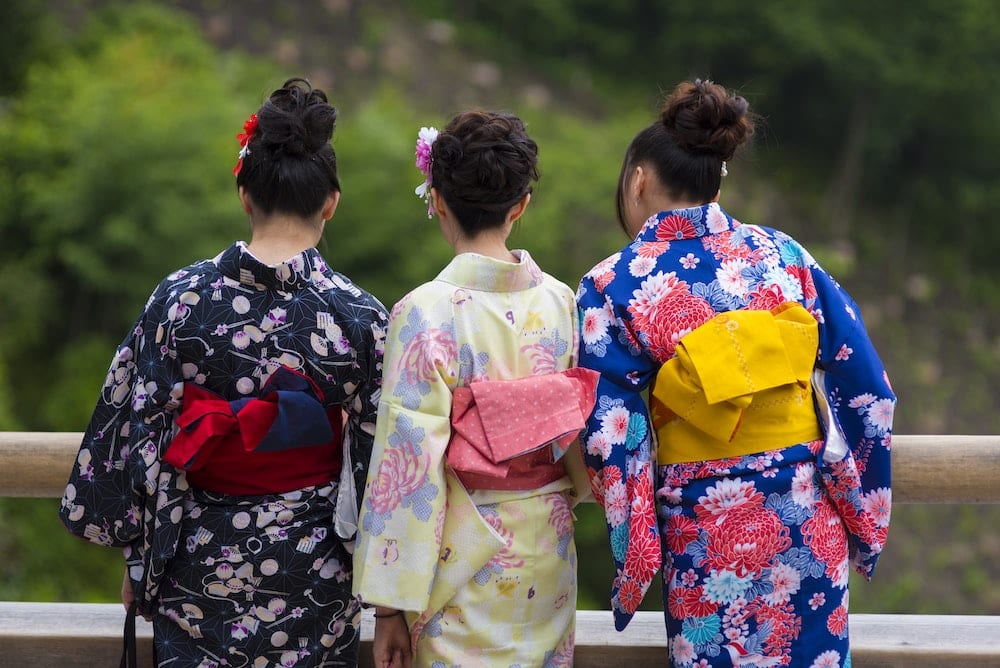How Can You Incorporate a Kimono into Your Everyday Wardrobe?

The History and Significance of Kimonos
The art of wearing a kimono, a traditional Japanese garment, is not just about fashion. It’s a statement, a conversation starter, a testament to a culture that prides itself on its meticulous attention to detail.
Kimonos have been an essential part of Japanese clothing for centuries. Initially, the term ‘kimono’ simply meant ‘a thing to wear,’ but over time, it has come to represent a specific style of dress that is instantly recognizable worldwide.
A découvrir également : How to Select the Perfect Pair of Snow Boots for Winter Elegance?
Traditionally made from silk, kimonos are meticulously crafted, often hand-sewn, and can take several months to complete. They are usually worn with an under layer, called a nagajuban, and a sash or belt known as an obi. The ensemble is completed with traditional socks (tabi) and footwear (zori or geta).
There are various types of kimonos, each worn for different occasions and seasons. For instance, a furisode with long, swinging sleeves is worn by young, unmarried women, while a haori, a kind of kimono jacket, is a more casual option.
Cela peut vous intéresser : How Can You Incorporate a Mini Crossbody Bag into a Fashionable Evening Look?
Incorporating Kimonos into Your Everyday Wardrobe
With the influence of global fashion, the kimono has evolved from its traditional form and found a place in modern wardrobes around the world. Here’s how you can incorporate this exquisite garment into your everyday style.
Kimono as Outerwear
A great way to wear a kimono in a casual setting is as an outer layer. Opt for a short kimono or a haori in a lightweight fabric such as cotton or linen. Wear it over a simple t-shirt and jeans, creating an interesting contrast between the ornate kimono and the understated clothes underneath.
For a more formal look, pair a silk kimono with a black dress or tailored trousers. The sheen of the silk will add an elegant touch to your outfit.
Kimono as a Dress
Another popular way to wear a kimono is as a dress. This style works best with a long, full-length kimono. Secure the robe with an obi, or if you prefer a less traditional look, a wide belt. Pair it with strappy sandals or boots, and you have a unique outfit that will turn heads.
Remember to choose a kimono with a pattern and color that suit your skin tone and personal style.
Kimono as a Beach Cover-Up
For a summery look, a kimono can serve as a perfect beach cover-up. Opt for kimonos made from lightweight, breezy fabrics. The vibrant patterns and colors often found on kimonos make for excellent beachwear and contrast beautifully with the blue sea and sky.
Men and Kimonos
Kimonos are not just for women; men can also incorporate these traditional garments into their wardrobes. In Japan, men’s kimonos are typically more subdued in color, with smaller patterns or even solid colors.
For casual wear, men can wear a short kimono or haori over a t-shirt and jeans. It’s a great way to add a unique twist to a simple outfit. For a more formal occasion, a full-length silk kimono can make a bold statement.
Caring for Your Kimono
When you invest in a kimono, you will want to keep it in the best possible condition. The care needed for your kimono will largely depend on the fabric. Silk kimonos, for instance, are usually dry-clean only. Always check the care instructions before cleaning your kimono.
It’s also important to store your kimono correctly. When not in use, it should be folded and stored in a cool, dry place away from direct sunlight. Avoid hanging your kimono for long periods, as this can cause the fabric to stretch.
Incorporating a kimono into your everyday wardrobe can be a wonderful way to appreciate a traditional piece of Japanese culture. Whether dressed up or down, a kimono is a versatile piece that adds elegance and sophistication to any outfit. So why not give it a try and let your style transcend continents and centuries with this timeless garment?
Kimono Styles and Occasion Wear
From cultural events to everyday wear, the kimono robe can be tailored to fit any occasion. Traditional Japanese clothing is all about proper etiquette, and the way you wear your kimono can speak volumes about you and the event you’re attending.
For formal events such as weddings or tea ceremonies, a fully embroidered silk kimono with an obi is the standard ensemble. Women typically wear kimonos with elaborate designs, often with a family crest (kamon), while men’s kimonos are usually more restrained, featuring subtle patterns and dark colors. These special occasions demand the beauty and elegance that only a traditional Japanese kimono can provide.
But kimonos aren’t just for special occasions. They can be worn as everyday attire too. On casual days, a short kimono or kimono cardigan made from comfortable fabrics such as cotton or linen is a popular choice. These lighter versions, often in vibrant colors and prints, are perfect for a relaxed day out or a simple home gathering.
In the modern fashion world, the kimono dress is a popular trend. These kimono robes are designed in a way that combines the elegance of the traditional garment with the convenience of a dress. These dresses are versatile and suitable for many occasions, from office wear to weekend brunches.
Conclusion: Kimonos and Personal Style
Integrating a kimono into your everyday wardrobe is a celebration of Japanese culture, a nod to its rich historical legacy, and an excellent way to improve your personal style. The kimono robe can act as a statement piece, elevating a casual outfit or adding a touch of elegance to an ensemble for a special occasion.
The silk kimono, while initially seen as an extravagant purchase, is in fact an investment in your wardrobe. Its versatility and timeless appeal ensure that it will never go out of style. Whether as a dress, an outer cover, or a beachwear accessory, the possibilities are limitless when it comes to styling your kimono.
Caring for your kimono, particularly if it’s a silk robe, is crucial for its longevity. Proper cleaning and storage practices will ensure that this beautiful piece of clothing stays in its best condition for years to come.
Incorporating a kimono into your everyday wear is more than just a fashion statement. It’s a way to embrace and honor a culture that has captivated the world with its sophistication, intricate detail, and timeless elegance. It’s your opportunity to bring a piece of that culture into your life and wardrobe. Wearing a kimono is truly an experience, one that combines the past and the present in a beautifully seamless fashion.
So don’t hesitate to try on a kimono cardigan for your next casual outing, or a luxurious silk kimono for a special event. Explore the different kimono styles and colors, and find what suits your personal style best. Wearing a kimono is an adventure, a journey through centuries of tradition and artistry, right in your everyday life.
